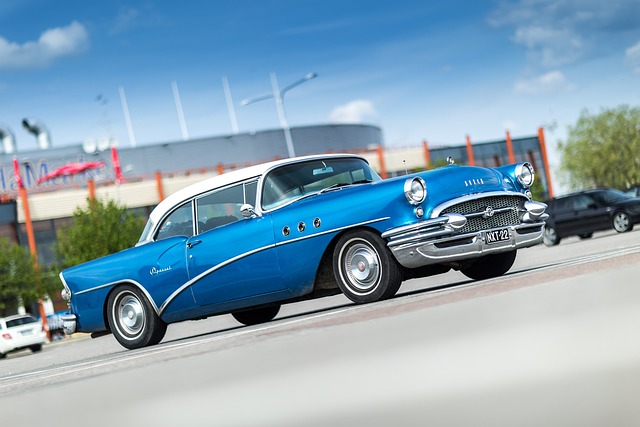Looking to register your car in California? This comprehensive guide walks you through every step, ensuring a smooth process. From understanding key requirements and gathering essential documents to performing a DMV title transfer and using an approved DMV VIN verifier, we cover it all. By following these clear instructions, you’ll be on your way to becoming a California car owner in no time.
- Understand the Requirements for Car Registration in California
- Gather Necessary Documents for Car Registration
- Perform a DMV (Department of Motor Vehicles) Title Transfer
- Use a DMV-Approved VIN Verifier
- Complete the Car Registration Process at the DMV
Understand the Requirements for Car Registration in California

Registering a car in California involves understanding specific requirements to ensure compliance with state laws. Before initiating the registration process, it’s crucial to familiarize yourself with the essential documents needed, vehicle eligibility criteria, and acceptable payment methods. One critical step is obtaining a valid Vehicle Identification Number (VIN) verifier from the Department of Motor Vehicles (DMV). This unique identifier plays a pivotal role in verifying your car’s history and ensuring it meets safety standards.
Additionally, consider the option of a mobile VIN inspection or using a mobile vin verifier to simplify the process. These services allow for convenient verification of your vehicle’s details at your preferred location, saving you time and effort. By adhering to these guidelines and utilizing available resources like the DMV VIN verifier, you can efficiently navigate the car registration process in California.
Gather Necessary Documents for Car Registration

Before you begin the registration process, it’s crucial to gather all the essential documents for car registration in California. The Department of Motor Vehicles (DMV) requires a variety of paperwork to ensure the legitimacy and ownership of your vehicle. Among these, the Vehicle Identification Number (VIN) is paramount. A DMV VIN verifier can help you access detailed information about your car’s history, including its previous owners and any reported accidents or damages.
For a smooth registration process, prepare documents such as proof of identity (like a driver’s license), proof of insurance, and the title of ownership—either in your name or from the seller. If you’re using a mobile VIN verification service, ensure it’s reputable and approved by the DMV to expedite the inspection process. Alternatively, you can conduct a VIN inspection at a local DMV office, where they’ll cross-check the vehicle’s details against their records.
Perform a DMV (Department of Motor Vehicles) Title Transfer

To officially register your car in California, performing a DMV Title Transfer is a crucial step. This process involves updating the vehicle’s ownership record with the Department of Motor Vehicles (DMV). Before initiating the transfer, ensure that the current owner has all necessary documents, including the vehicle’s title and a valid driver’s license or state ID. The DMV offers both in-person and online methods for this transfer.
One efficient way to streamline the process is by utilizing a mobile vin verification service. This allows you to verify your car’s Vehicle Identification Number (VIN) using a mobile app, ensuring the vehicle’s history is clear. A mobile vin verifier can also assist with gathering the required documents, making the title transfer quicker and less cumbersome.
Use a DMV-Approved VIN Verifier

When preparing your vehicle for registration in California, ensuring the Vehicle Identification Number (VIN) is accurate and legitimate is paramount. A DMV-Approved VIN Verifier plays a crucial role in this process. These professionals are equipped with specialized tools to conduct a thorough inspection, including a mobile vin inspection option, which allows them to verify the VIN’s authenticity on-site.
This service is essential for several reasons. Firstly, it safeguards against potential fraud or tampering with your vehicle’s identity. Secondly, it ensures that you’re providing accurate information when registering, avoiding future issues and delays. Moreover, having a reliable vin inspection done by an approved verifier can streamline the registration process, making it more efficient and less stressful.
Complete the Car Registration Process at the DMV

To complete the car registration process in California, you’ll need to visit your local Department of Motor Vehicles (DMV) office. Bring all necessary documents, including proof of insurance, a valid driver’s license, and the vehicle’s title. The DMV will verify essential details about your car, one of which is the Vehicle Identification Number (VIN). This unique code can be quickly checked through a VIN verifier, often available as a mobile vin inspection service, to ensure the vehicle matches the provided information.
Once the VIN is confirmed, along with other requirements like registration fees and emissions tests, you’ll receive your new car registration. It’s advisable to check with your local DMV for specific guidelines and any additional steps required, especially if importing a vehicle or transferring ownership. Efficiently managing these procedures ensures a smooth transition for your newly registered California vehicle.
Registering a car in California involves understanding specific requirements, gathering essential documents, and completing a structured process. By performing a DMV title transfer, using a verified VIN (vehicle identification number) from an approved DMV vin verifier, and finishing the registration at the DMV, you ensure your vehicle’s legal status. These steps streamline the car registration process, making it efficient and accurate.
